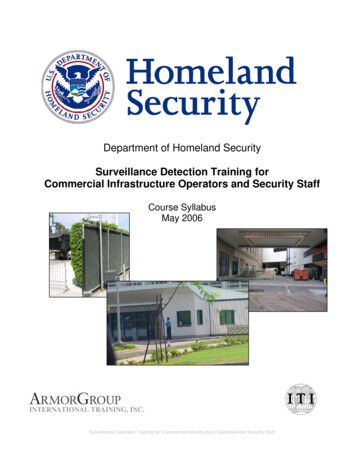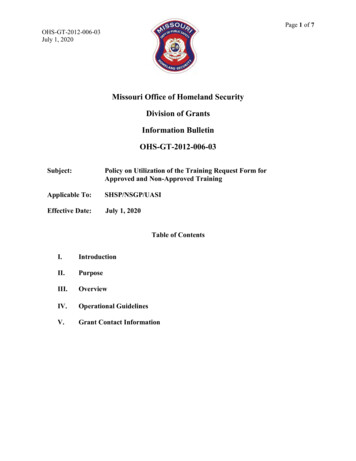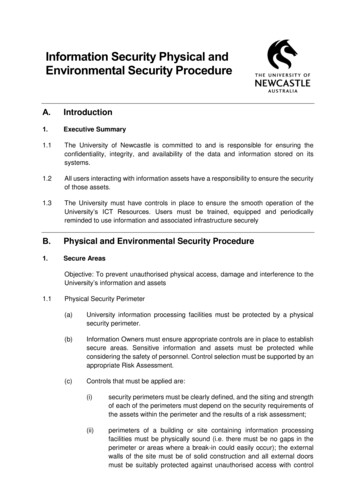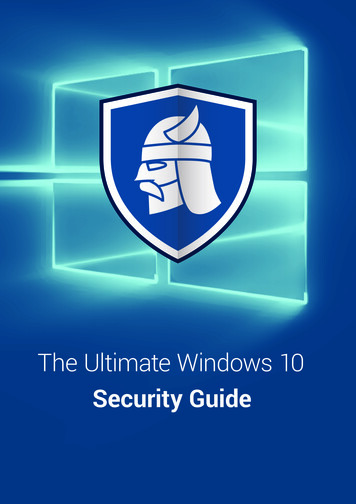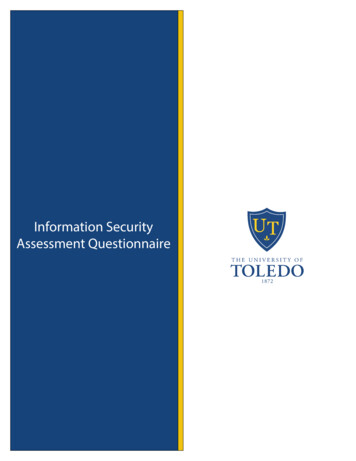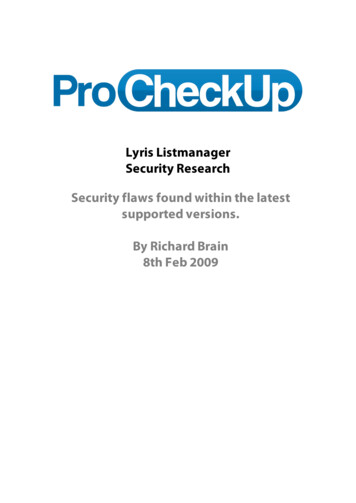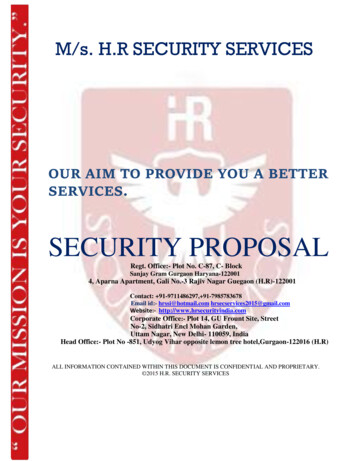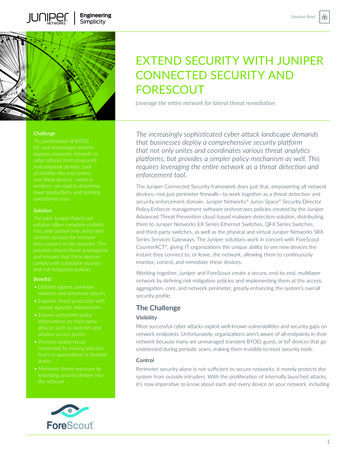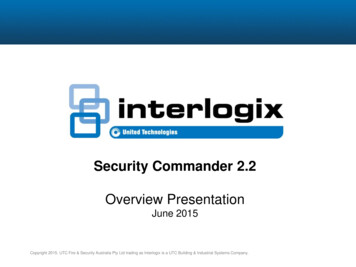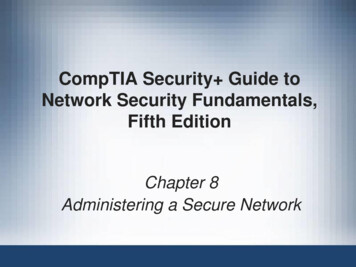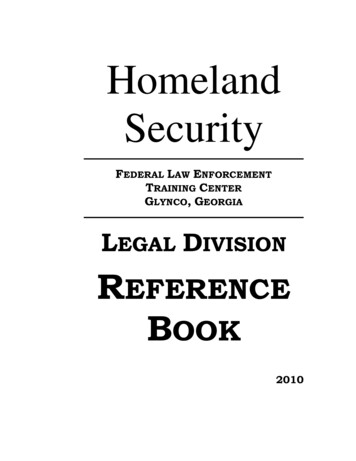
Transcription
HomelandSecurityFEDERAL LAW ENFORCEMENTTRAINING CENTERGLYNCO, GEORGIALEGAL DIVISIONREFERENCEBOOK2010
FLETCLEGAL DIVISIONWEB SITEwww.fletc.gov/legalPodcastsTHE INFORMERArticlesTraining ProgramsLinksCase Law DigestsVideocasts
Foreword to the 2010 EditionThe Legal Division Reference Book is the culmination of almost thirtyyears of dedicated efforts of many members of the Legal Division atthe Federal Law Enforcement Training Center. You will find briefdescriptions of the facts, issues and holdings of important SupremeCourt cases decided concerning Fourth, Fifth and Sixth Amendmentissues, as well as several others, taught by the Legal Division. Thereis also an Additional Resources section which includes guidance fromthe Departments of Homeland Security, Justice, and State as well asselected Federal Criminal Procedure and Evidence Rules, selectedFederal Criminal Statutes, and other helpful law enforcement legalresources. Note that the case law and statutes contained in this bookare current as of the date of publication.I invite you to visit the Legal Division‘s website at –www.fletc.gov/legalThere you will find other resources to keep you up to date on the everchanging law enforcement legal landscape, such asThe Informer – a monthly review of significant Supreme Court andFederal Courts of Appeals cases of interest to law enforcement. Youcan subscribe to The Informer by going to its page on the web site,clicking the ―subscribe‖ link, and entering your e-mail address.Case Digests – compilations of all of the cases reported in TheInformer during the year. For the years 2006–2009 and 2010 thereare two digests. One is organized by federal circuit and the other bysubject matter.PodCasts – covering the Fourth, Fifth, and Sixth Amendments as wellas many other issues of import to law enforcement, these 7-10minute presentations can be accessed through your computer ordownloaded to you mp3 player.You will also find articles, training programs, FAQs, and downloads.We trust that these books and other resources will serve you wellduring a long and successful law enforcement career.Poppi RitaccoEditorOctober 2010
How to Use this BookThe Legal Division Handbook relies essentially on the Supreme Courtcases that have developed Fourth, Fifth and Sixth Amendment law.Crucial principles of the law are embedded in the Handbook text withfrequent cites to the pertinent cases. This Reference Book provides anopportunity to gain further insight, clarity and understanding of thelaw by setting out the facts, issues, holding, and rationales of thosesignificant decisions. The cases are listed by subject in the Table ofContents and by name in the Index in the back of this book.This Reference Book is helpful in preparing for legal examinations.The facts of each case can mimic multiple choice test questions. Theissue in each case brief can serve as a test question. You mayattempt to answer the question posed in the issue before reading theSupreme Court‘s answer and rationale as a means of testing yourknowledge gained from course work and the Handbook.Foradditional practice test questions, see the Practice Exam booklet ion/practice-examsSpecific guidance from the Departments is arranged for quickreference on issues such as Use of Race, Legal Ethics, ConsensualMonitoring, HIPAA, Use of Deadly Force, Consular Notification,Interviewing Government Employees, the USA Patriot Act, and samplesearch warrant language. You will find this guidance in the Table ofContents.Step by step guidance on how to draft a Criminal Complaint, SearchWarrant application, and their probable cause affidavits, as wellexamples of common federal documents and forms are contained inthe Legal Division Student Guide to Preparing Criminal Complaints,Arrest Warrants, and Search Warrants.Editor’s Note: This online version of the Legal Division ReferenceBook has been edited so that it is compliant with Section 508 of theRehabilitation Act of 1973, as amended by 29 U.S.C. § 794 (d). Assuch, some documents have been removed.
TABLE OF CONTENTSFOURTH AMENDMENTI.EXCLUSIONARY RULE .1A.B.C.ORIGINS. 1Weeks v. United States .1Elkins v. United States .2Mapp v. Ohio .2FRUIT OF THE POISONOUS TREE . 3Silverthorne Lumber Co. v. United States .4Nardone et al. v. United States .4United States v. Ceccolini .5United States v. Crews .6Taylor v. Alabama .7Trupiano v. United States .9EXCEPTIONS. 91. No Standing to Object .9Rawlings v. Kentucky .9Rakas v. Illinois.10Wong Sun v. United States .11United States v. Salvucci, Jr. .12United States v. Payner .13United States v. Padilla .14Alderman v. United States .15Mancusi v. DeForte .162. Good Faith Exception.17United States v. Leon.17Massachusetts v. Sheppard.18Arizona v. Evans .19Illinois v. Krull .203. Impeachment Purposes .21Walder v. United States .21United States v. Havens .22James v. Illinois .244. Independent Source.25Murray v. United States.255. Inevitable Discovery .26Nix v. Williams .266. Other Hearings.28United States v. Calandra.28Pennsylvania Board of Probation and Parole v. Scott .29iTable of Contents
II.A.B.WHAT IS A SEARCH? .29APPLIES TO GOVERNMENT ACTIVITIES ONLY . 29New Jersey v. T.L.O.30Coolidge v. New Hampshire .31Gouled v. United States .32REASONABLE EXPECTATION OF PRIVACY. 32Katz v. United States .33California v. Ciraolo.33Dow Chemical Co. v. United States .34Florida v. Riley .35United States v. Chadwick.36Illinois v. Andreas .37United States v. Karo.39United States v. Knotts .40Cardwell v. Lewis.41Kyllo v. United States .42Hoffa v. United States .43Minnesota v. Olson .44Minnesota v. Carter .45O’Connor v. Ortega .46Hudson v. Palmer .48Maryland v. Macon.49New York v. Class .50Bond v. United States .51United States v. Place .521. Open Fields .53Hester v. United States .53Oliver v. United States .54United States v. Dunn.552. Abandoned Property .56California v. Greenwood .56Abel v. United States .573. Foreign Searches .57United States v. Verdugo-Urquidez.584. Private Intrusions .59United States v. Jacobsen.59Walter v. United States .605. Third Party Control .61United States v. Miller .61Smith v. Maryland .62iiTable of Contents
III.A.B.IV.A.WHAT IS A SEIZURE?.63California v. Hodari .63Brower v. Inyo County .64Michigan v. Chesternut .65Brendlin v. California .65Florida v. Bostick .66United States v. Drayton.67Soldal v. Cook County .69ARRESTS . 701. Premises.70Payton v. New York .70New York v. Harris .71Kirk v. Louisiana .722. Third Party Premises .73Steagald v. United States .73Pembaur v. Cincinnati .743. Arrest Warrants.75Whiteley v. Warden .75United States v. Watson .76Atwater v. City of Lago Vista .78Maryland v. Buie.79STOPS . 81Terry v. Ohio .81Delaware v. Prouse .82Davis v. Mississippi.83Florida v. Royer.84United States v. Sharpe .85Illinois v. Caballes .87Pennsylvania v. Mimms .88Maryland v. Wilson .89United States v. Hensley .90Hayes v. Florida.92United States v. Montoya de Hernandez .93United States v. Martinez-Fuerte .95Almeida-Sanchez v. United States.96LEVELS OF SUSPICION .97PROBABLE CAUSE. 97Ornelas v. United States .97Henry v. United States .98Draper v. United States .99Sibron
homeland security federal law enforcement training center glynco, georgia. l. egal . d. ivision . r. eference . b. ook. 2010
